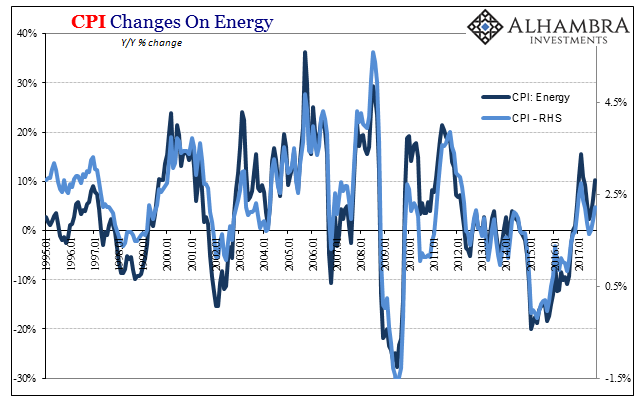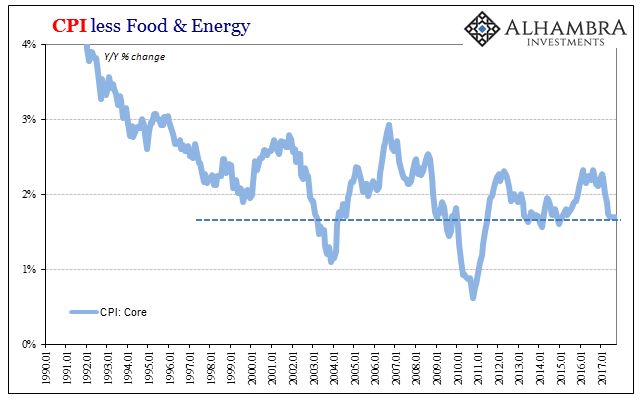The US Consumer Price Index (CPI) rose back above 2% in September 2017 for the first time since April. Boosted yet again by energy prices, consumer prices overall still aren’t where the Fed needs them to be (by its own policies, not consumer reality). In fact, despite a 10.2% gain in the energy price index last month, the overall CPI just barely crossed the 2% mark (though for the Fed it really needs to be closer to 3% to match a 2% PCE Deflator).

The energy index rose about the same in September as it did in January and March. The headline inflation rate was higher in those months, however, because the rest of the price components have since suggested the opposite of what orthodox theory mandates.


The core rate, the version excluding energy and food prices, rose by 1.7% in September for the fifth consecutive month. If there was some latent price momentum underlying as all the usual mainstream talk of “transitory” factors demands, the core price level would not just be above 2% it would be rising steadily past it.
In 2005 and 2006, for example, core inflation accelerated consistently up to around 3% as the headline CPI shifted from below 2% (as a result of the sluggish recovery form the dot-com recession) to nearly 5% at the height of the housing bubble. The core rate over the last six years, by contrast, has been remarkably steady in a relatively narrow range at a lower level consistent with the lackluster to awful economy produced in those six years.

This view is corroborated by other similar CPI details. The index for consumer price changes in services (minus shelter) has been even more stubborn in this position than the core version. It has yet to break out above 3% for any single month the entire time since the Great “Recession.” In more recent months, since January, it has instead decelerated alongside a great many other economic accounts and indications recognizing the complete disappointment of conditions in 2017 (not at all what “reflation” was thinking late last year).













Leave A Comment